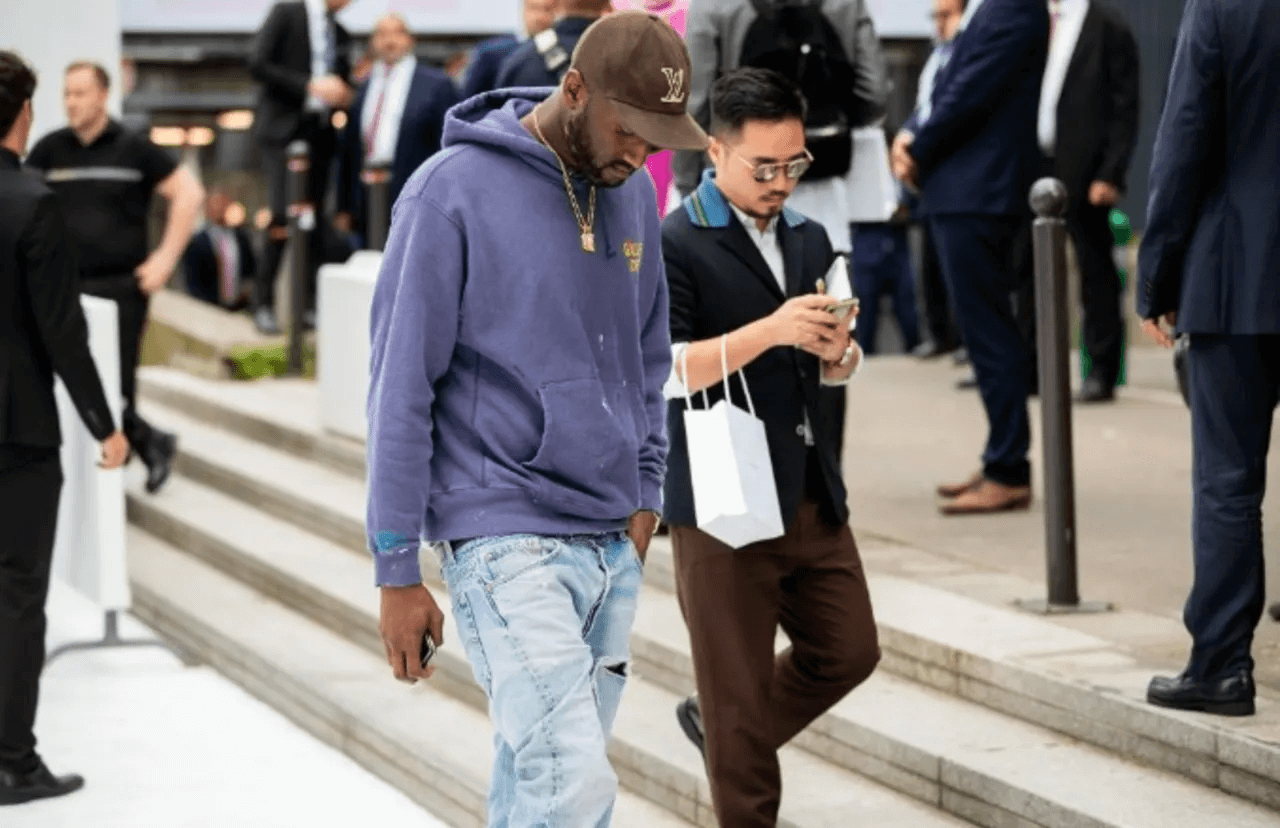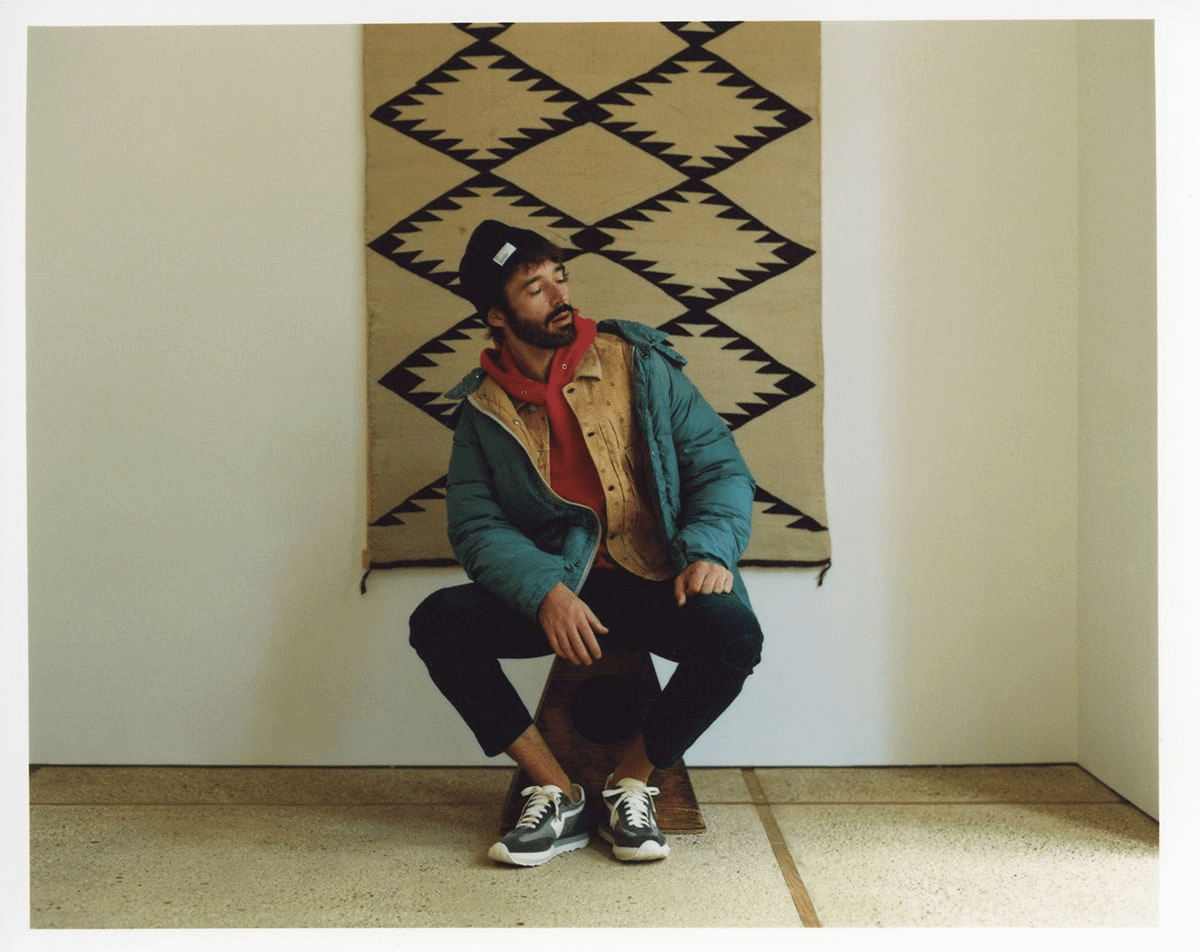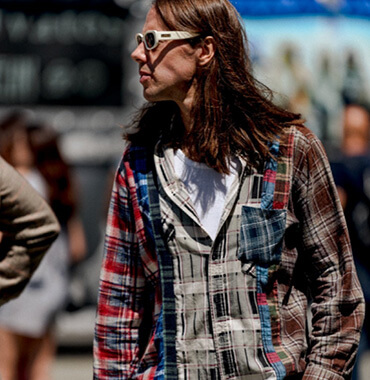In An Era of Fast Fashion, Vintage Denim is Becoming the New Luxury
When it comes to wearing denim, 99% of people will likely opt for washed denim over raw. In fact, most consumers might not even be aware of what raw denim is. The truth is unless you’re a true denim fanatic, it’s not that fun or comfortable to wear old school 100% cotton denim in its “raw” unwashed state.
It’s rigid and rough against the skin. Granted you can beat the fades achieved from breaking in your own raw jeans, but for most people they don’t want to spend 6 months softening their denim, they want it pre-washed and blended with elastane for that soft and supple hand they’re familiar with. The biggest point that most denim enthusiasts argue is that raw jeans not only last longer than mass-market jeans, but they get better with age too. In a year, raw jeans will soften and mold to your body and develop subtle imperfections that lend them a beauty and emotional charge that only comes with time and wear. It makes those items feel special and alive. But in an era where fast fashion rules and you can purchase $10 pre-washed jeans from Walmart, it's unsurprising consumers don’t think twice before tossing out jeans after a year. In fact they are probably in their best state when purchased in store and it only declines from there. It’s no wonder that brands like Nudie Jeans and A.P.C. have seen a gap in the market for upselling pre-worn jeans that have been lovingly worn by their customers for years at an astonishing mark-up. The truth is cheap, disposable fashion is one of the biggest issues facing the fashion industry today. The lack of value and quality given to clothes has resulted in a mounting waste issue. Over the last 15 years, we have doubled the amount of clothing produced, while the amount of time clothes are worn before they are thrown away has fallen by almost 40% – and jeans are no exception. 6 billion jeans are produced a year, and 30% of those (1.8 billion jeans) never even get worn. After use, less than 1% of clothes are recycled into new. The rest of those materials are lost to landfill and incineration. Today’s high street stores and fast fashion brands are packed with clothes that lure consumers with enticing prices and crispy fabrics. Sure they look and feel good when you cut the tags off, but we all know the same old story about how they quickly lose vibrancy and shape as you continually use and wash them. For denim, the biggest offenders are those jeans made with synthetic stretch materials to be more comfortable (or less expensive). They’re not the sort of thing you want to keep repairing and wearing.
These types of jeans are a prime example of how our relationship to denim is changing. In the past, we didn’t have the same abundance of cheap stuff so readily available at the click of a button. In the good ol’ days people had no choice but to mend their garments when they became damaged. How many people do you know who do this today? Standard operating procedure today is to buy cheap and replace often, rather than invest and repair. If you consider this at scale across the world, it's easy to paint the picture of how discarded clothing at landfill has become a real global environmental issue. One of the biggest shifts that has turned us away from buying clothes that get better with age is that they are often designed to have very short product life cycles. This is an issue that the Ellen McArthur foundation has been addressing with its recently published guidelines that encourages brands to make clothes durable enough to withstand a minimum of 30 home laundries and still meet durability requirements. This ability to withstand wear and tear is what has made vintage denim so appealing in recent years. That old pair of Levi’s 501 from the 50s or even the 80s are made from such high-quality materials and construction that they are even more covetable today than they were back then. That’s why Levi’s recently launched its Secondhand initiative which keeps its coveted vintage pieces in circulation and out of landfill. As chief marketing officer Jen Sey points out, nearly 60% of Gen Z consumers already buy secondhand clothes. “They love the hunt, they love finding a really unique item, and it makes it even better that it’s a sustainable choice,” she says. “Buying a used pair of Levi’s saves approximately 80% of the CO2 emissions, and 1.5 pounds of waste, compared to buying a new pair. As we scale this, that will really start adding up.”

For this new generation, buying into vintage has certainly become a new means of virtue signalling and showing a pledge to reducing impact. But it’s also just as much about knowledge and knowing the history behind the product and why it's covetable. For multi-hyphenate creative Virgil Abloh, he see’s vintage as a new form of luxury for this cohort. “To me, luxury means a value system. To a younger group of people, you could replace the word “luxury” with the word “coveted” he explained in an interview with 032C. He uses his vintage Levi’s jeans as an example of why the meaning of luxury is shifting to value. “I covet these vintage Levi’s jeans, because I couldn’t even find another pair like this. This is luxury to me. It doesn’t mean that it’s glossy or the finest fabrics. That doesn’t matter.” At the centre of this vintage revival is the growing cohort of resell platforms and instagram sellers that have been redefining what vintage means today and what items are deemed covetable. It also happens to be one prominent category that has been outperforming traditional retail during COVID-19 pandemic. LA based IG seller @unsoundrags is one of the leading resellers who has been driving a new interest in the old, worn and beautiful through tasteful curations of carefully selected vintage. Think sun faded Carhartt work jackets, stained Levi’s jeans and vintage tees frayed to perfection. For them, it's all about finding the beauty in every fray, fade and tear. A quick scan through their feed and you’ll notice the pattern of beautifully distressed and well worn goods that are thoughtfully shot against sculpted cement backdrop that instantly give the items an elevated feel. Unsound Rag’s vintage selections are a prime example of the type of clothes that get better with age. Denim and canvas are both fabrics that age gracefully when the quality is good. The cotton softens and conforms to the wearer as it slowly breaks in, and in the the threads are dyed in such a way that the outer layer of colour wears off to reveal a white core, creating workwears signature fades.
It’s this aesthetic and sense of value that has been inspiring a new wave of contemporary menswear brands that are attempting to simulate that same worn in, vintage character that’s usually only achieved through years of wear. Japanese labels Visvim and Kapital are two of the names that have been leading this neo-vintage revival for some years now. Known for their eclectic designs that reimagine mid-century Americana, Kapital and Visvim have been using traditional Japanese crafts to reimagine their own take on Amekaji style. Much of their collections rely on handcrafted techniques like boro and sashiko or in the case of Visvim processes like mud dyeing to create their modern vintage designs. Visvim founder, Hiroki Nakamura is a self confessed anthropologist of apparel and he travels the world with a bunch of empty suitcases seeking out traditional methods of weaving, dyeing, and assembling textiles. When he returns to Tokyo, he publishes his observations on these crafts as small dissertations, and then begins figuring out how to integrate them into our modern cityscapes. As such, Visvim is the antithesis of fast fashion. Rather than throwing away these insights every season, Hiroki seeks to evolve the brand's archetypes so they become even more durable as the years go by. He describes the process as the crafting of “future vintage.”

While Visvim’s products are a marvel of design, their garments are ultimately an expensive niche product, fighting against a powerful tide of brands and customers, who both prioritize cost and efficiency. A pair of Visvim’s jeans rarely costs less than $500 (and could reach to more than twice that), versus spending $60 or so at many mass-market shops. Reese Cooper is one the new American menswear labels that have emerged in the wake of the workwear renaissance kickstarted by labels like Fear of God, Heron Preston and Billy Los Angeles. The multi-disciplinary artist behind the brand, Mr Reese Cooper debuted his first collection of locally made Americana-inspired clothing in 2016 when he was just 18 years old. Rooted in vintage style, his designs fuse Americana elements, workwear-inspired silhouettes and practical fabrics that are made for the great outdoors. “I’m taking all the things I’m comfortable with and giving them a new context,” said Cooper in an interview with Vogue last year. “I think it’s something I always wanted to do but finally felt ready.”
This outdoorsy spin on streetwear translates into clothes that have grounded, everyday appeal. His denim jackets and jeans are crafted from durable, mid-weight denim that's treated to make it look like it's been a dependable favourite for years. “How do we make [these pieces] so that I would want to wear them as I grow older; I don’t want people to feel like they are dressing like teenagers forever.” While Cooper’s designs might appear to be pulled off a vintage rack in the Rose Bowl, the fabrics are in fact treated this way to simulate a time-worn look. Calik has been working to create such fabrics within their new Denovated, a new concept that offers an authentic look combined with the advantages of today’s technology. These vintage-inspired denims include all the distinctive twill lines, defined slubs, open-end looks and salt and pepper effects that you’d typically expect from an 80s and 90s look. Perfect for these vintage look is the rigid fabrics that are offered in unique marble finishes as well as true workwear hues like purple and navy that can be washed and laundered to create that true vintage character.
To view full content and a better mobile experience, try



